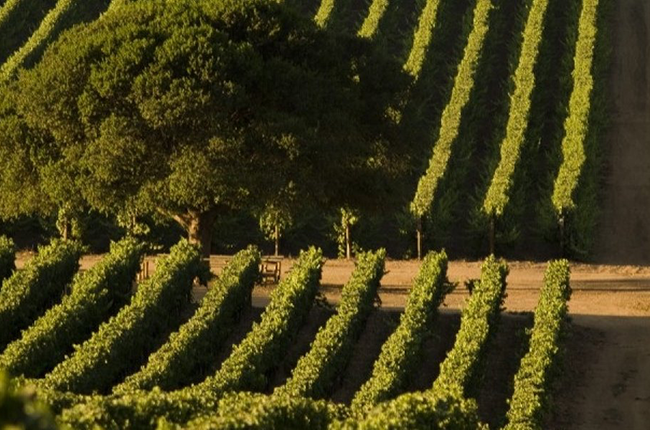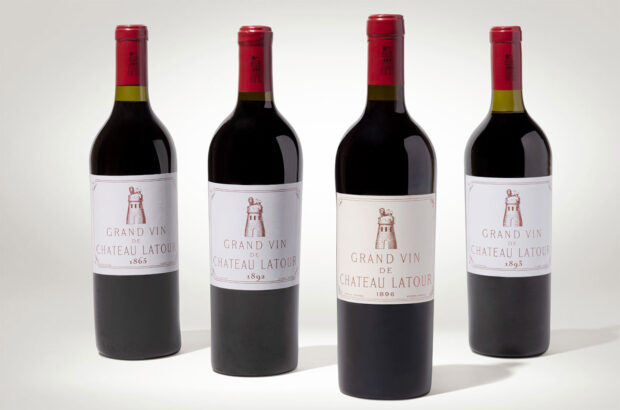Chile's wine producers have gained in confidence, earning it a reputation as one of the New World’s most dynamic wine regions. PETER RICHARDS, a regular visitor to Chile over the past year, summarises what’s new and exciting, and recommends his top white wines, while Decanter’s CHRISTELLE GUIBERT picks her favourite ds.
News from Chile is that a whole new wine is emerging: a tentative but definite metamorphosis. As one winery owner put it: ‘Chile’s wine has a new skin.’
This is not a case of wholesale change; it’s more like a new realm of possibility is being opened up in Chile’s wine repertoire. The reasons behind this step-up are numerous but essentially it’s down to increased focus on the vineyard, the development of new wine-growing regions in more marginal climates, increased diversity of plant material and, quite simply, experience. Effecting change in wine is never an overnight business, but Chile is growing up fast.
Chile’s whites are a prime example. Even just a few years ago, the best examples were proficient but hardly groundbreaking. Now, with the emergence of regions such as San Antonio and Limarí, Chile seems capable of producing world-beating whites (especially Sauvignon Blanc). There’s a real buzz in the industry as winemakers realise this is just the beginning.
2004 vintage
This was a testing vintage across the country. In contrast with the largely uniform 2003, whose warm summer and benign autumn made for good concentration and complexity, 2004 had a cool spring, a very hot summer and a patchy autumn, with rains affecting some areas in the latter part of the harvest.
None of these climatic occurrences was overly troubling in itself. Those tested in this vintage were the producers themselves. If the vineyards weren’t managed scrupulously well, if yields were too high, or if the rains panicked producers into picking too early (flashbacks to 2002 were enough for some), then results were disappointing. The better wines are good, probably for short to mid-term drinking, and may show better earlier than many 2003s. Choose your producer with care.
Varieties to watch
The most exciting varieties of Chile’s wine right now are Sauvignon Blanc, Carmenère, Syrah and Cabernet Sauvignon.
Sauvignon Blanc has risen to the fore on the back of regions such as San Antonio, Limarí and Casablanca. Intelligent choices of site, clonal material and harvest dates have produced some stunning wines, and we can expect better things to come.
Carmenère has come on leaps and bounds in the last few years, both as a blending component and on its own (though better versions will usually have a bit of Cabernet or Syrah). Getting to grips with this difficult variety has taken time, and its success is testament to Chile’s progress in the vineyard.
Syrah is finding favour all across Chile but is coming into its own in cooler, more demanding terroirs where complexity is the aim and not just power.
Cabernet continues to be the backbone of Chile’s wine production both in terms of quality and quantity. It’s at its best in the Andes foothills, such as Alto Maipo or Alto Cachapoal, where it gives fresh fruit, natural balance and complexity.
Regions & Producers of Chile’s wine to watch
Get ready to learn some new names. Discovering exciting new regions and re-evaluating traditional ones is proving a heady combination. San Antonio is a classic case of the former, emerging from nowhere in 2002/3 with wines of real class and promise. Top producers of Chile’s wine include Garcés Silva – currently the most exciting winery in Chile with its Amayna line – as well as Viña Leyda and Casa Marín. Sauvignon and Pinot look good.
Wine has been made in Limarí for a while but it was only when vineyards were developed in the cooler coastal region that the wines started to fire the imagination. Tabalí (a San Pedro joint venture) is the producer to watch and is excellent across the board, though the Sauvignon and Syrah steal the show.
In the more traditional regions of Maipo and Rapel the most promising moves in the vineyard have been near the mountains in the east or the coast in the west, although isolated terroirs such as Apalta (Montes, Casa Lapostolle, Santa Rita) and Ninquén (MontGras) in Colchagua are all worth recommending.
In the east, Alto Maipo is consolidating its position as one of Chile’s wine prime spots for complex reds, through the wines of traditional producers like the excellent Concha y Toro as well as exciting newcomers such as El Principal, Haras de Pirque, Pérez Cruz and Antiyal. Alto Cachapoal’s drive is being led by Altaïr (another San Pedro joint venture). Over to the western coastal parts, the likes of Marchihue (Montes) and Lolol (J&F Lurton) in Colchagua look promising. Progress has been slower in the south, where whites and cool-climate reds have potential. Producers to watch include Canata and Agustinos, in Bío Bío.
Other good producers currently on form include Botalcura, Casas del Bosque, Cono Sur, Odfjell, San Pedro, Viñedos Orgánicos Emiliana (VOE) and Von Siebenthal.
Garcés Silva, Amayna Sauvignon Blanc, Leyda Valley, San Antonio 2003
At last, a Chilean Sauvignon for hedonists and foodies alike. This is a cracker, combining lush citrus character with superb structure and breadth of flavour. A new dimension for Chilean whites. Drink now. £13.49; Pgn
Casa Marín, Sauvignon Blanc, Laurel Vineyard, San Antonio Valley 2003
https://www.decanter.com/wine-travel/south-america/three-day-chile-wine-tour-ask-decanter-300608/
Mariluz Marín’s Sauvignons tend to be tauter in style than others from San Antonio while retaining the region’s hallmark breadth of flavour and elegant structure. Drink now. £13.95; L&W
Cono Sur 20, Barrels Limited Edition Chardonnay, Casablanca Valley 2003
Another complex, balanced Chardonnay, with quality Casablanca fruit giving an elegant style showing fresh white fruit and glazed nuts. Up to 2 years. £12.99; Wes
Viña Casas del Bosque, Sauvignon Blanc Reserva, Casablanca Valley 2004
Made from black clay soils not far from the sea, this is an impressive pungent leaf-and-lime style of Sauvignon with good structure and texture on the palate. Drink now. £6.99; Myl
Viña Leyda, Chardonnay, Lot 5 Wild Yeasts, Leyda Valley, San Antonio 2003
This stands out for its vibrancy, complexity and balance. Hazelnut and floral in character, with a fresh, integrated natural acidity and mineral finish. Up to 3 years. £12.95; Adn, Har, HoF
Agustinos, Sauvignon Blanc Reserve, Bío Bío Valley 2004
Juán Ignacio Ramsay uses Chile’s cool southerly climate, a range of clones and harvest times, as well as stainless steel barrels. Passion fruit and floral hints lead into a broad, plush palate. Drink now. £6.99; Hal
Casa Marín, Gewürztraminer, Casona Vineyard, San Antonio Valley 2004
Chile produces some fine Gewürz but this is a different style, tending more towards a subtle yet generous character, with the aromatic perfume played down though still evident. Light spice and flinty notes. Drink now. £14.45; L&W
Novas, Winemaker’s Selection, Organic Sauvignon Blanc, Casablanca Valley 2004
Not the most aromatically expressive wine but one that comes into its own on the palate. Citrus, gooseberry and leafy character with a creamy texture. Drink now. £7.50; VRo
Santa Rita, Sauvignon Blanc Reserva, Casablanca Valley 2004
This producer is doing well with Sauvignon. This version includes 10% of Leyda Valley fruit and shows green pepper, crushed leaf and stone fruit character, with a balanced but full palate. Drink now. £6.99; AcG, ANg, Brs, LWC, Maj, WBs
Tabalí, Sauvignon Blanc, Limarí Valley 2004
Limarí tends to produce a more restrained style of white than San Antonio, as shown in this delicate citrus-flavoured, mineral Sauvignon. Expect more complexity from future vintages. Drink now. £5.95; Buc
Estampa, Gold Assemblage, Syrah-Cabernet Sauvignon-Merlot, Colchagua Valley 2003
Nice spiciness with intense fruits, hint of oak. Balanced palate with a fresh acidity, blackberry with some chocolatey characters, long on the finish. Drinking well now. £9.99; McK
Los Vascos, Grand Reserve, Cabernet Sauvignon, Colchagua Valley 2001
Elegant red fruit bouquet with some pepper and undergrowth aromas. Smooth and velvety on the palate, ripe tannins and elegant red fruit characters. Drinking well now but will age for another five years. £9.85; DBR
Odfjell, Armardor, Carmenère-Merlot, Maule Valley 2003
Very inviting; elegant nose of pepper, cedar with some red fruit. Well structured on the palate, complex fruit intensity, nice tobacco characters on the finish. 2–5 years. £9.95; WTr
Perez Cruz, Reserva Cabernet Sauvignon-Merlot-Carmenère, Maipo Valley 2003
Lovely blackcurrant intensity on the nose, some creamy, spicy notes. Very attractive palate, clean and fresh fruit characters, vibrant acidity. Up to 2 years. £7.99; Nov
Veramonte, Primus, Merlot-Cabernet Sauvignon-Carmenère, Casablanca Valley 2002
Gorgeous aroma; notes of green pepper and spice with well-integrated oak. Full bodied with rich tannins, round with good concentration, very elegant on the finish. Up to 5 years. £9.99; RoT
Viña la Rosa, Don Reca Merlot-Cabernet Sauvignon-Carmenère, Cachapoal Valley 2003
Very attractive nose, rich black forest aromas, spice and chocolate complexity. Full-bodied wine with good concentration, well structured with a nice fruity finish. Up to 5 years. £9.99; HWC
Cremaschi Furlotti, Reserva Syrah, Maule Valley 2003
Very expressive on the nose, well-developed black fruit. Nice and soft on the palate, balanced fruit with ripe tannins. Very good value for money. Drinking well now. £6.99; Haw
Novas, Winemakers Selection, Organic Syrah-Mourvèdre, Colchagua Valley 2003
Nice berry fruit on the nose with a chocolatey richness. Nice structure with some vivid fruit characters; balanced palate with a long finish. Drinking well now. £7.50; VRo
San Esteban, In Situ, Syrah, Aconcagua Valley 2003
Aged in French and American oak for 12 months; aromatic on the nose, with a hint of violet. Ripe tannins with an elegant structure, and some creamy oak characters on the finish. Drinking well now. £6–7.99; Alb
Viú Manent, Malbec-Cabernet Sauvignon, Colchagua Valley 2003
This wine displays an expressive nose of dark chocolate and ripe black fruit. Velvety tannins on the palate with complex black forest fruit characters. Long lingering finish. Up to 4 years. £14; CPy, ElV







